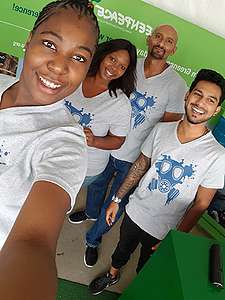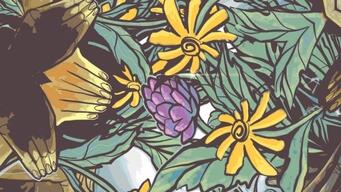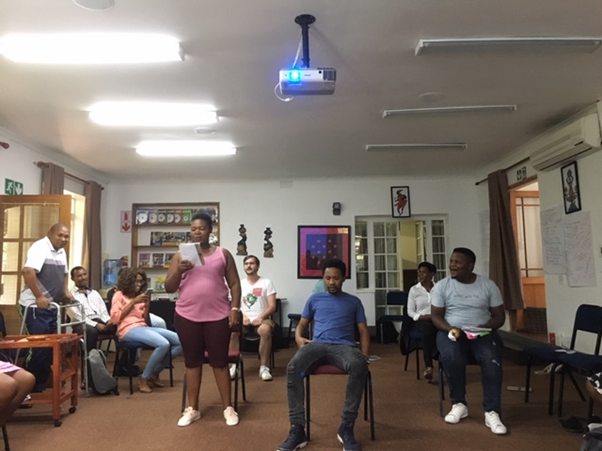I remember when I was younger there was nothing that made me happier than waiting in bed for my father to come and tell me my bedtime story. His stories were of dragons and monsters, and heroes on quests. Stories that filled me with awe and wonder, and safely tucked me in and sent me down the river of dreams. Stories that kindled my imagination and ignited my creativity. Tales that ultimately embedded values, and ways of looking at life, and shaped me into the person I am today.
That’s the power of stories. They challenge you to imagine an alternative world, a better world, and in doing so sow seeds of change.
These nightly adventures were not unique to my father and me. We all have stories running through our veins. We are all natural storytellers. The key however is how to unlock this innate talent and implant in our day-to-day work so that it becomes an unshakeable pillar that shapes how we we talk to, and treat, our supporters. But how do we unlock this talent in our Direct Dialogue community? This was a primary question that I would return to again and again when co-creating the DDCR Change Through Storytelling Workshop. How can we create a toolbox for Direct Dialogue practitioners that contains the right equipment to help them unlock and build-upon their natural skills?
It was an arduous quest, a journey that pushed me to delve into my own skill set to deliver an output that will be useful and beneficial to the community. Because the community is already made up of superstars, and superstars deserves the best. Ultimately, the answer to my question lay in a balancing act, in finding the harmony between understanding our audience, telling the story and continuing the journey with them. We had to introduce and guide them through the theory at the hand of practical exercises. Exercises designed to not only build their storytelling muscles, but also to embed the theoretical knowledge that we share through the workshop.
 Thankfully the global Greenpeace family is made up of brilliant minds. Minds that have brought us the Storytelling Workshop, Audience Understanding tools and the Supporter Journey Workshop. Through replicating and refining the best instruments in the Greenpeace atelier we were able to create a workshop that (in theory) should deliver the desired results. A workshop that will hone direct dialogue campaigners’ skills and give them the mechanisms that will make storytelling a core function of their work.
Thankfully the global Greenpeace family is made up of brilliant minds. Minds that have brought us the Storytelling Workshop, Audience Understanding tools and the Supporter Journey Workshop. Through replicating and refining the best instruments in the Greenpeace atelier we were able to create a workshop that (in theory) should deliver the desired results. A workshop that will hone direct dialogue campaigners’ skills and give them the mechanisms that will make storytelling a core function of their work.
Releasing the finished product to the community was one of those moments that I will secretly treasure for the rest of my life. A moment that filled me with a deep satisfaction and a sense of achievement. But at the same time a moment that left my inner-narrator asking: “How will the community react to this?”, and “Will the community in actuality find this helpful?”
Initial feedback was overwhelmingly positive and allowed me to breathe a sigh of relief. I felt a little bit like Sally Field when she received the Oscar for Best Actress in 1984, and wanted to shout from rooftops: “They like it! They really like it!” But after the euphoria subsided some I was still left wondering if the workshop will work. Thankfully Greenpeace Africa, my home, was the first office to pilot the workshop and soon that question would be answered.
Together with the fantastic Thetis Kosmopoulou from the GED, we facilitated the workshop in early January 2019. Although the workshop is designed for Direct Dialogue practitioners we threw it open to the entire fundraising team and also invited the engagement gurus, and we ended up with a wonderful mix of minds in the room. It was a marvelous medley made up of the DDC team and the DDC manager, team-leaders and the TFR Manager amongst others. The benefit of this was that we could co-create a story for the entire fundraising department. Afterall, I am a firm believer that there should be one strong story told by multiple voices.
I kept the approach to the workshop very experiential. We would learn and explore the theory and then make it tangible at the hand of practical exercises. Ultimately the best way to learn is to do, and by using the theory at the hand of exercises built around an actual campaign the attendees were able to see how (often difficult) ideas becomes easy to understand and effortless to implement. In fact, it was heartwarming to see eyes bright with comprehension and hearts eager to learn and absorb. It was clear that the minds in the room were taking ownership of our story and they were eager to build their storytelling muscles to become storytelling Olympians.
And the answer to my often uncertain inner-narrator’s question about the value of the workshop? That too was answered by the overall good responses to, and excitement about, our labour of love. The fundraising practitioners promulgated that the implementation exercises were key in understanding basic elements and that the workshop made storytelling a crucial and transformative part of the fundraising strategy. This time Sally was screaming: “It works! It really works!”
The workshop created a wonderful and positive ripple effect within the Greenpeace Africa fundraising department, and we will now move forward with some message testing, optimizing the Supporter Journey and connecting the experience the supporter had in the field while talking to the Greenpeace representative that continues until the third communication we have with them. All with the principles of storytelling at the heart of it.
Again, the power of stories proved to sow seeds of change.
With that being said, I will give the global Greenpeace family some unsolicited (and completely subjective) advice: make use of this amazing tool. We can only bring about the change we wish to see in the world if we start by changing ourselves and unlocking our true storytelling potential.
Stefan Blignaut is the Supporter Journey Manager for Greenpeace Africa. With a background in the performing arts, telling stories is close to his heart.



